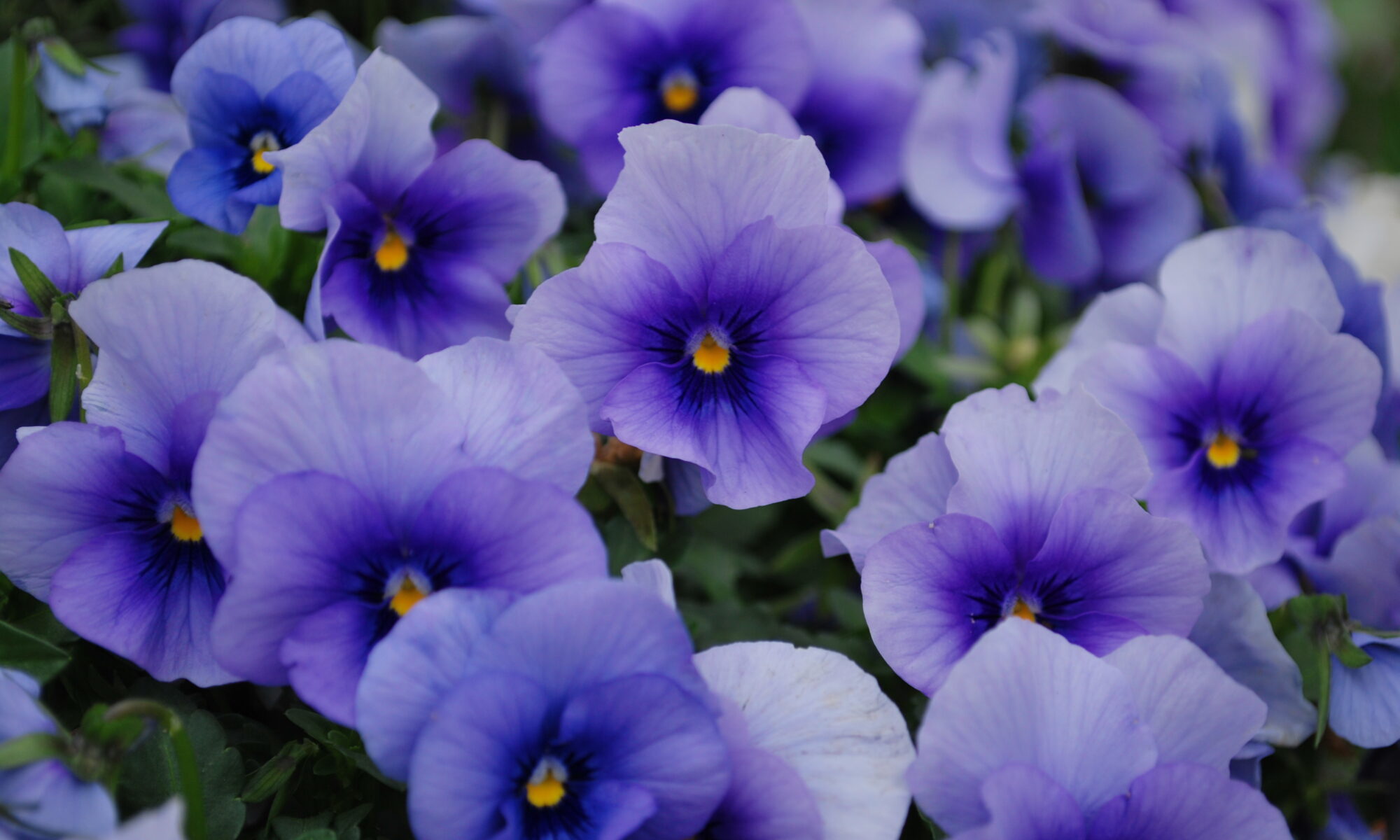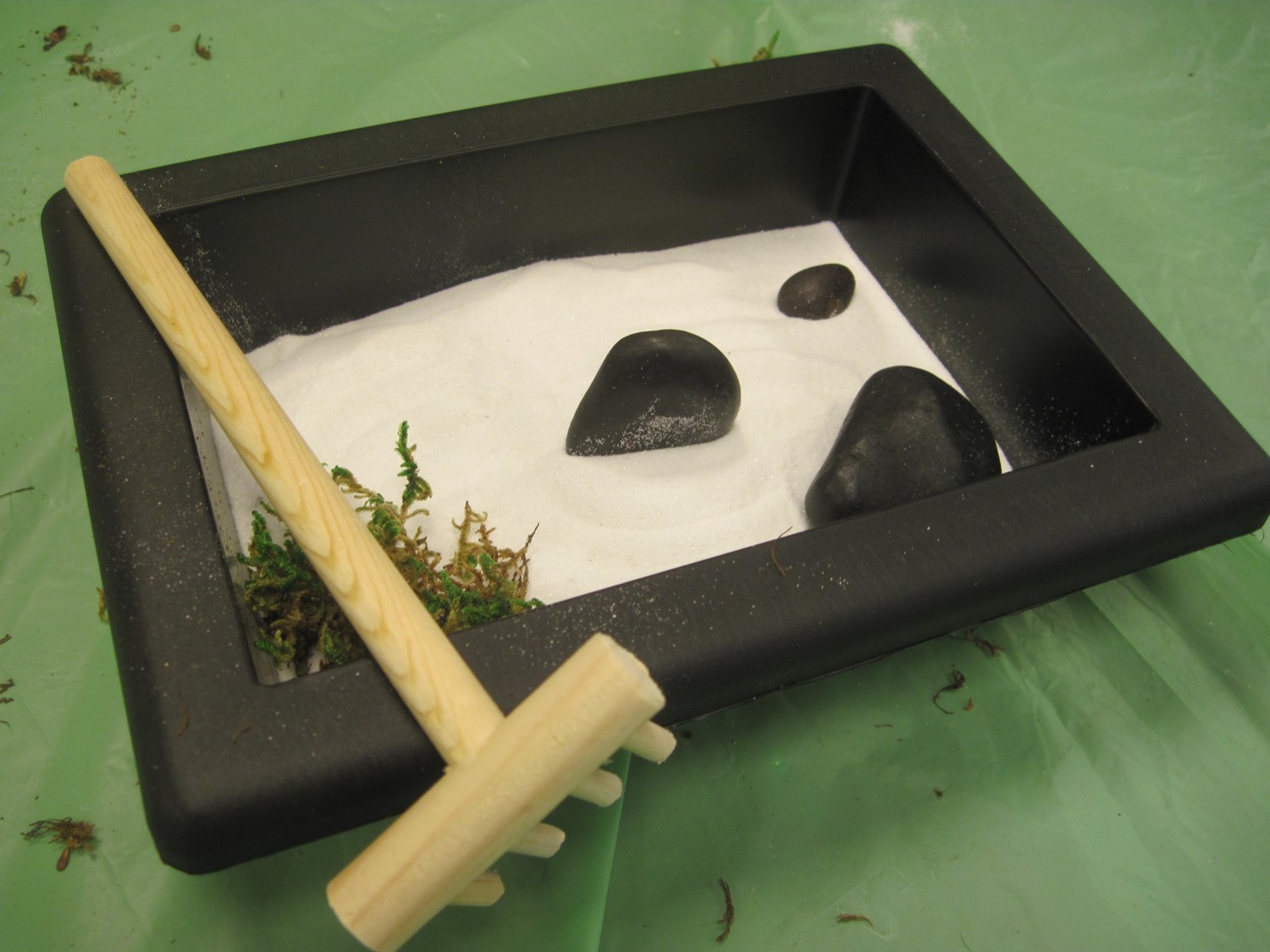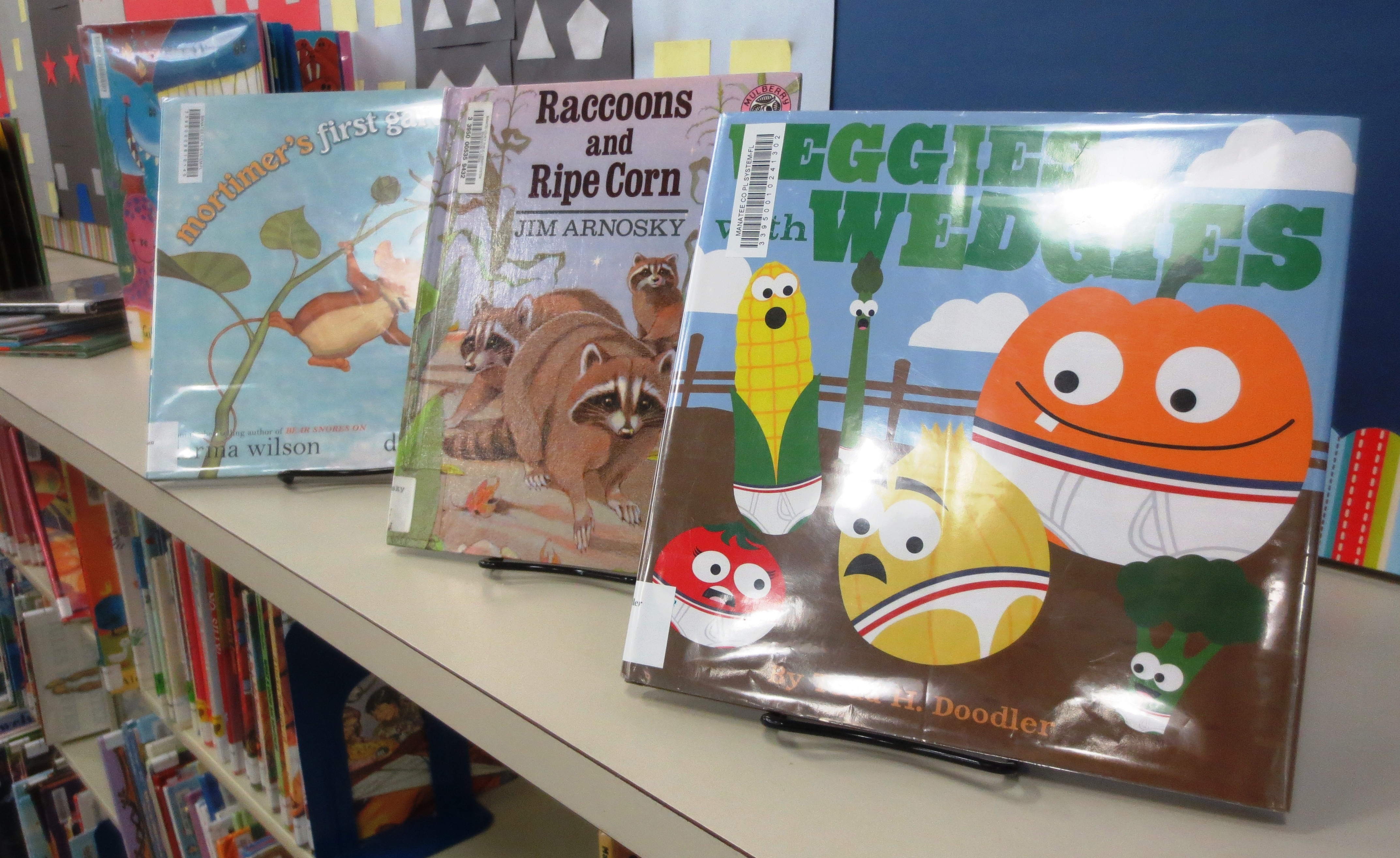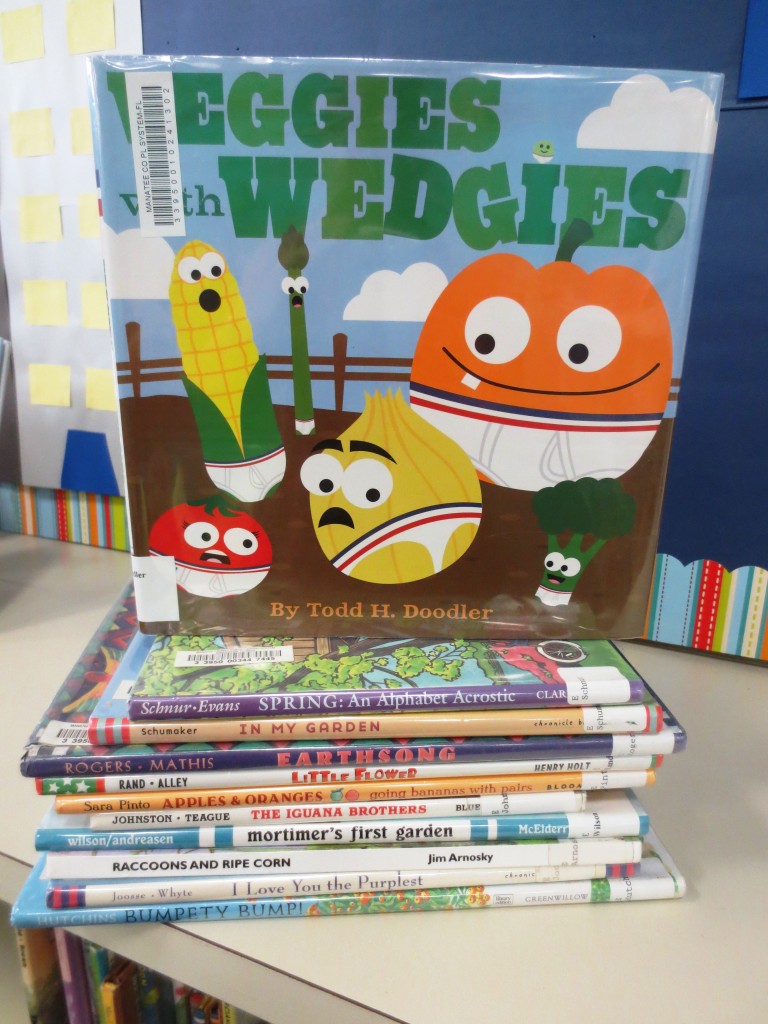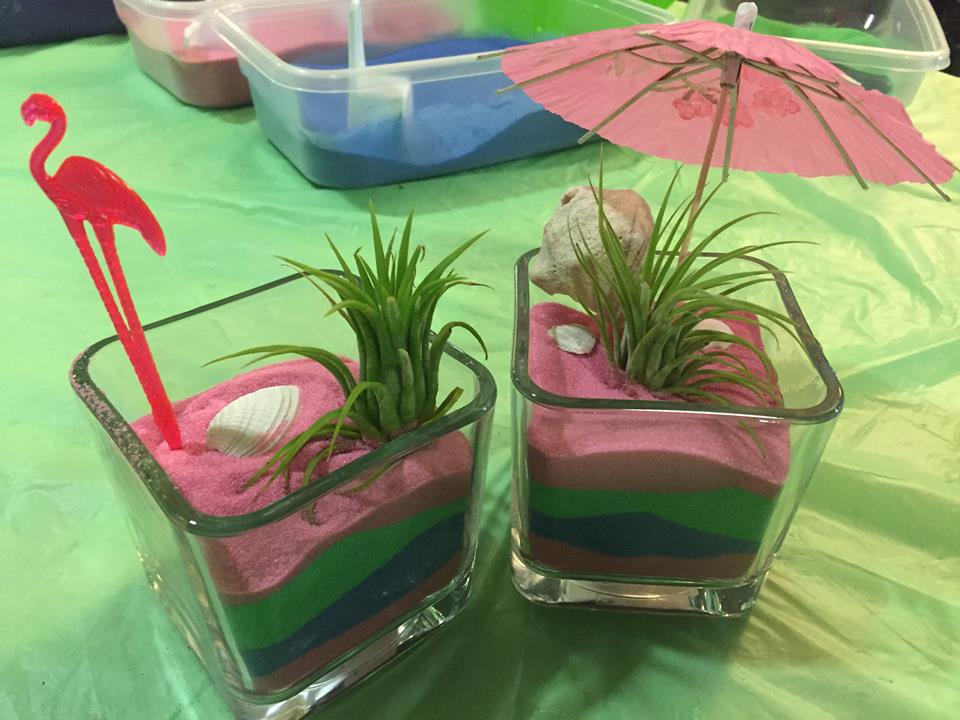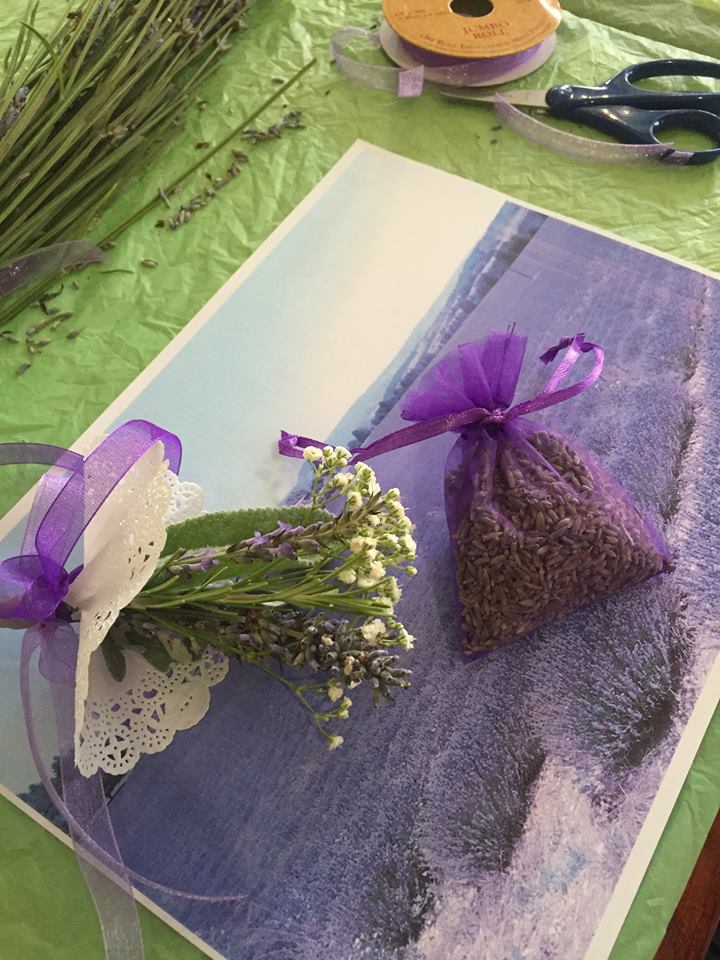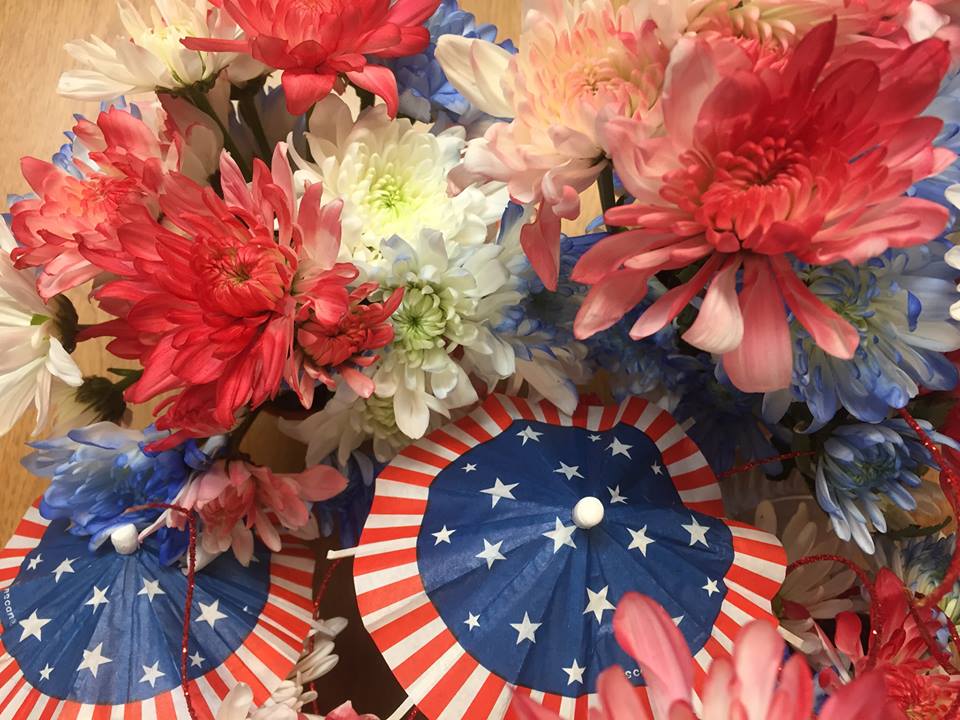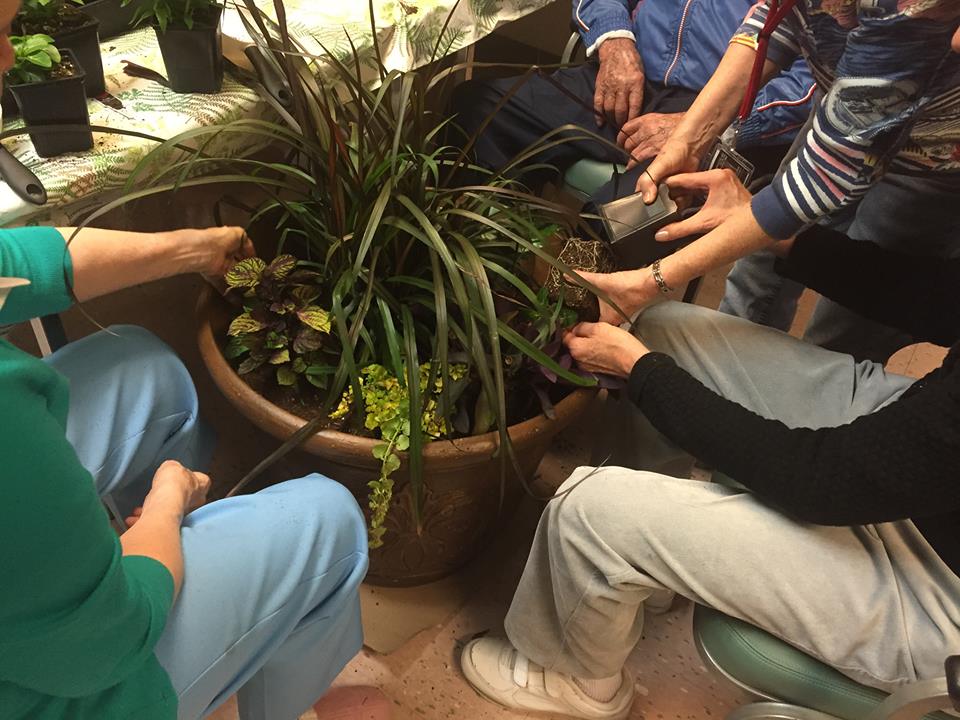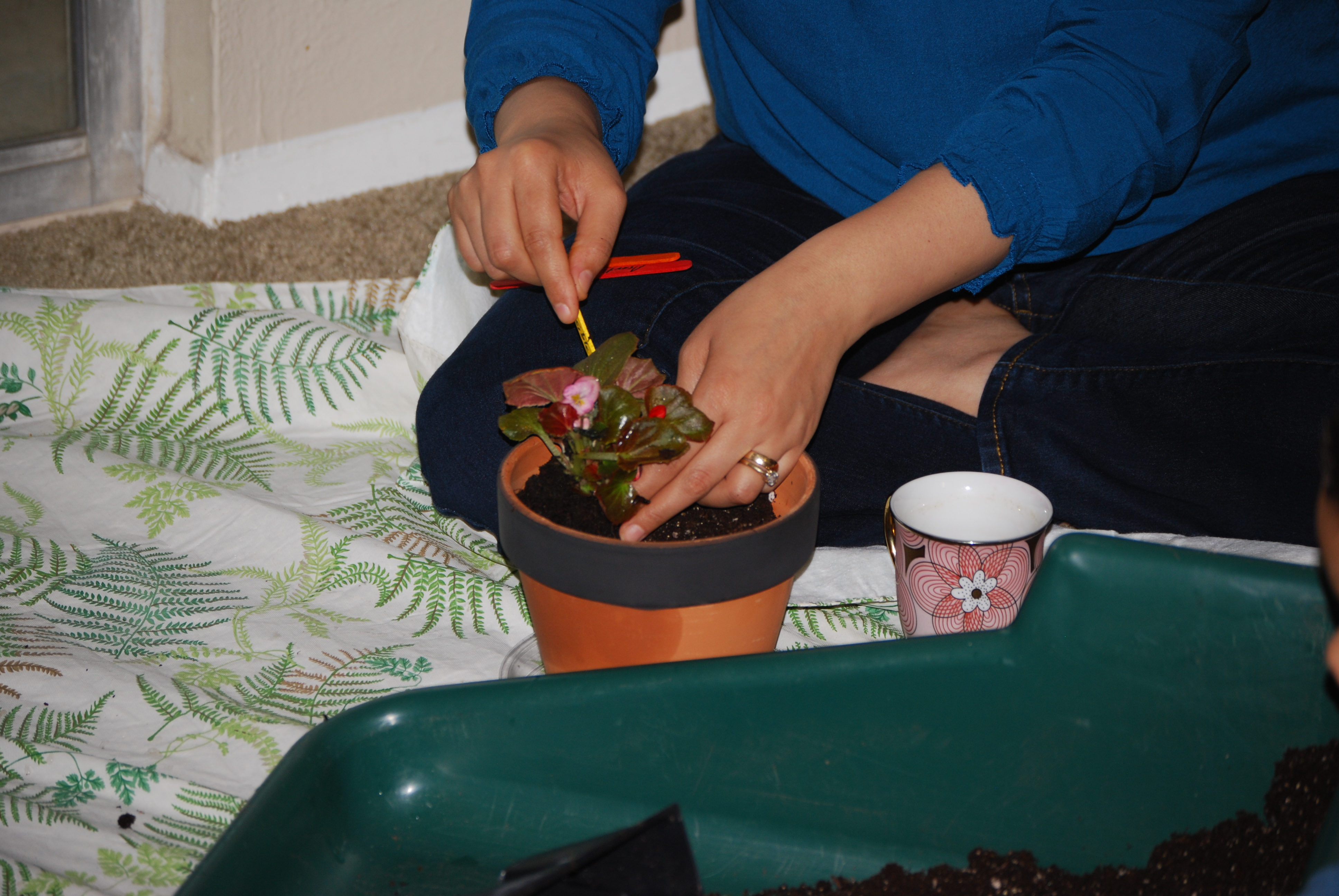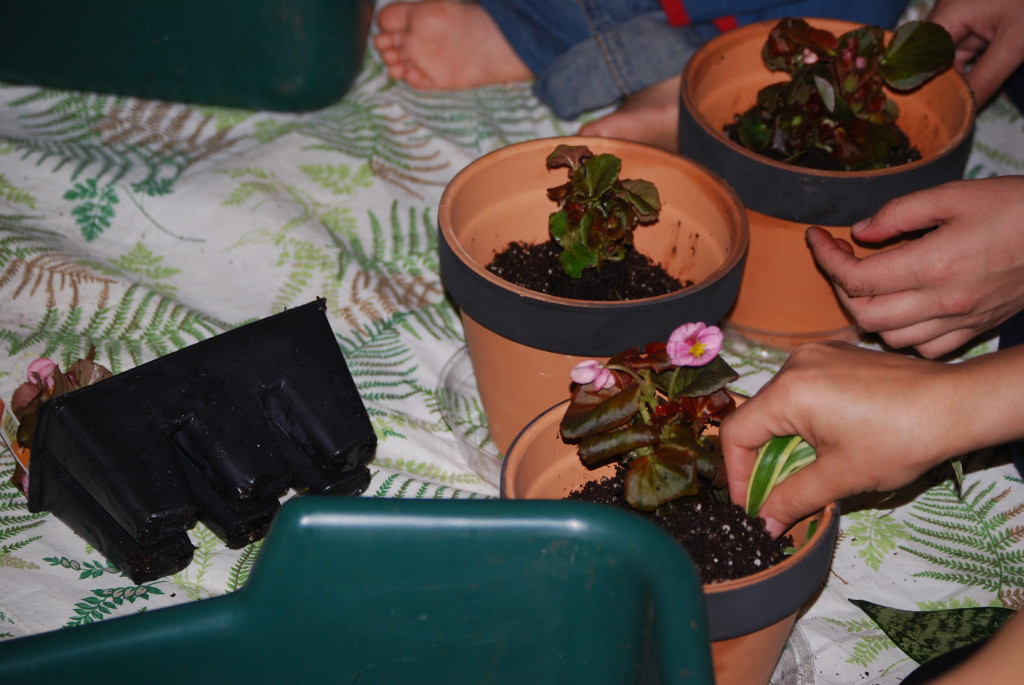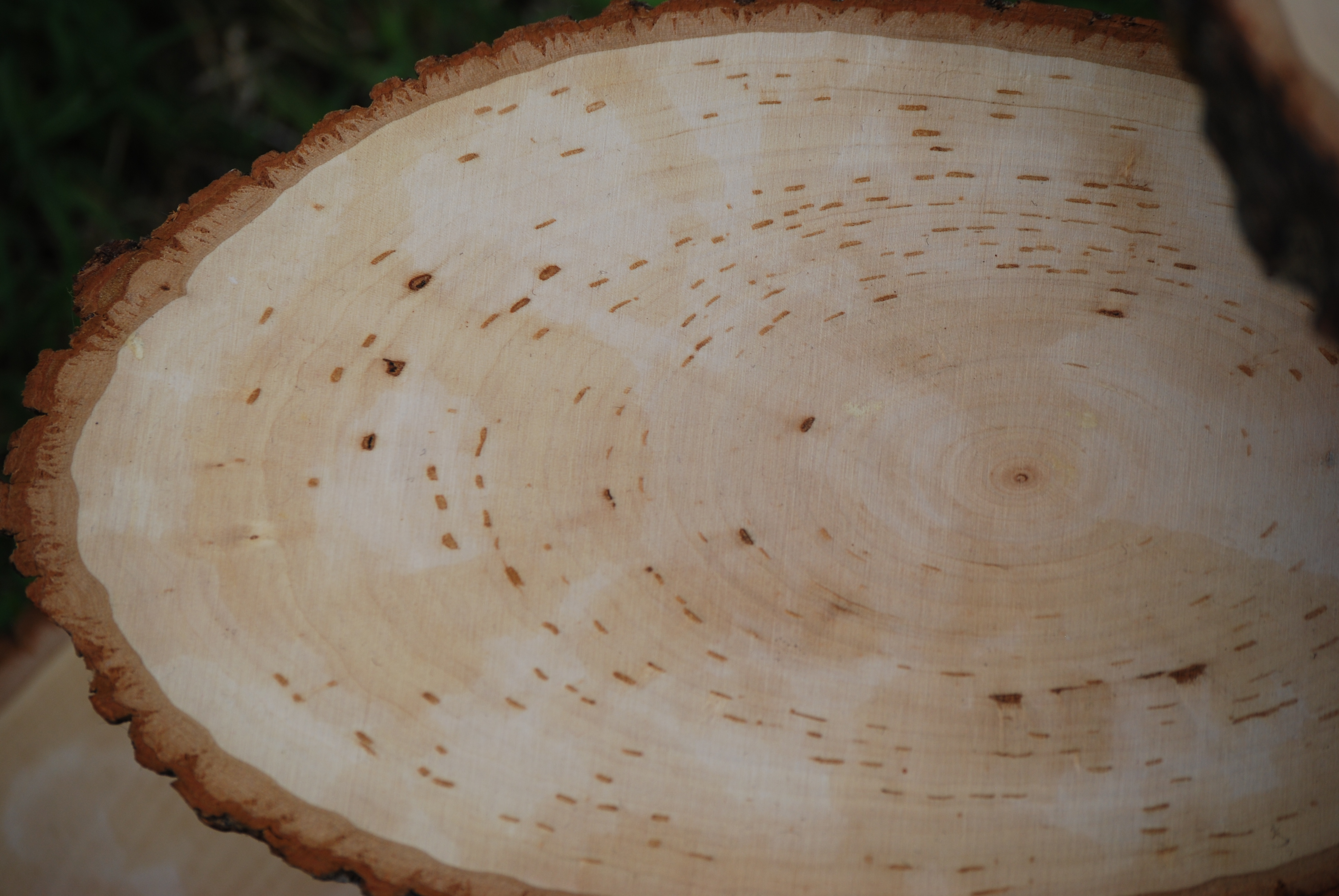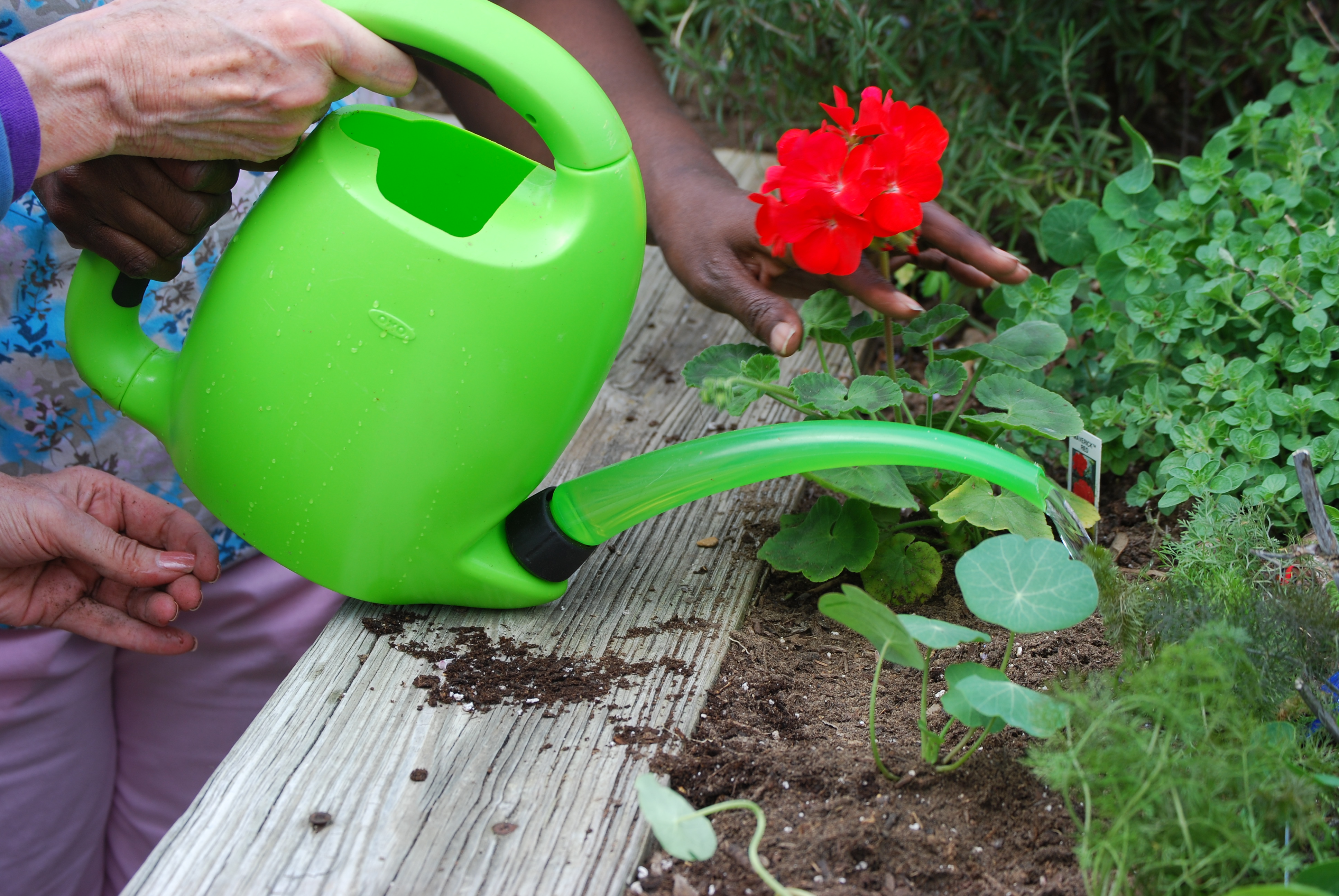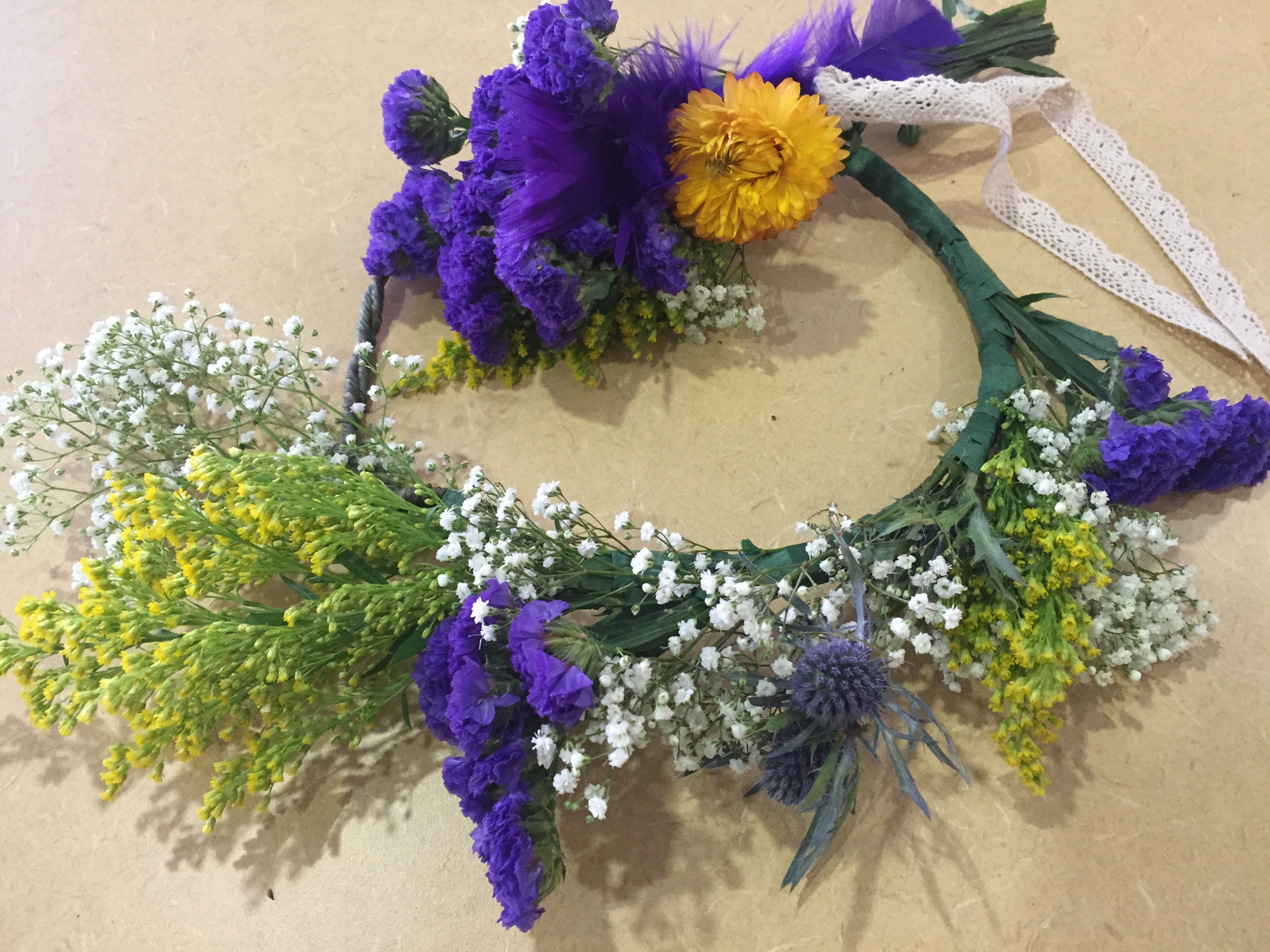A Daily Dose of Vitamin “N”
What Florists Know [And What We Wish We Knew] About Cut Flowers
Veggies with Wedgies (and Other Summer Reading for Gardeners of all Ages)
By Lesley Fleming, HTR
Are you looking for entertaining books appropriate for all ages and gardening abilities? As we gardeners dig more and then relax in our gardens this summer, consider a few children’s books with beautifully illustrated garden-related stories. Guaranteed to delight, these books can provide yet another element to intergenerational gardening experiences or offer a child-like moment full of sunshine.
Veggies with Wedgies
The veggie garden patch growing under Farmer John’s clothesline presents several challenges and I don’t mean sufficient sun exposure. Author & pop artist Todd H. Doodler offers a hilarious, colorful story that humans can relate to. Note: children may have to explain to their elders what a wedgie is!
Raccoons and Ripe Corn
Author & nature artist Jim Arnosky provides a vivid engaging story of nature’s autumn cycle when raccoons search for mature, tasty corn. Large print makes reading easy for early readers, older readers who left glasses elsewhere, and anyone who has ever grown corn or known raccoons.
Mortimer’s First Garden
The mouse who tries hard to be patient is rewarded with more sunflower seeds than he can eat when his own first garden sprouts and grows. Enchanting and full of wisdom, author Karma Wilson and illustrator Dan Andreasen capture the thrill of nurturing a garden and harvesting its bounty.
A Summer of Therapeutic Horticulture Activities
Whew, it’s a scorcher! Check out a few therapeutic horticulture activities that have kept my clients active this summer, in spite of the heat.
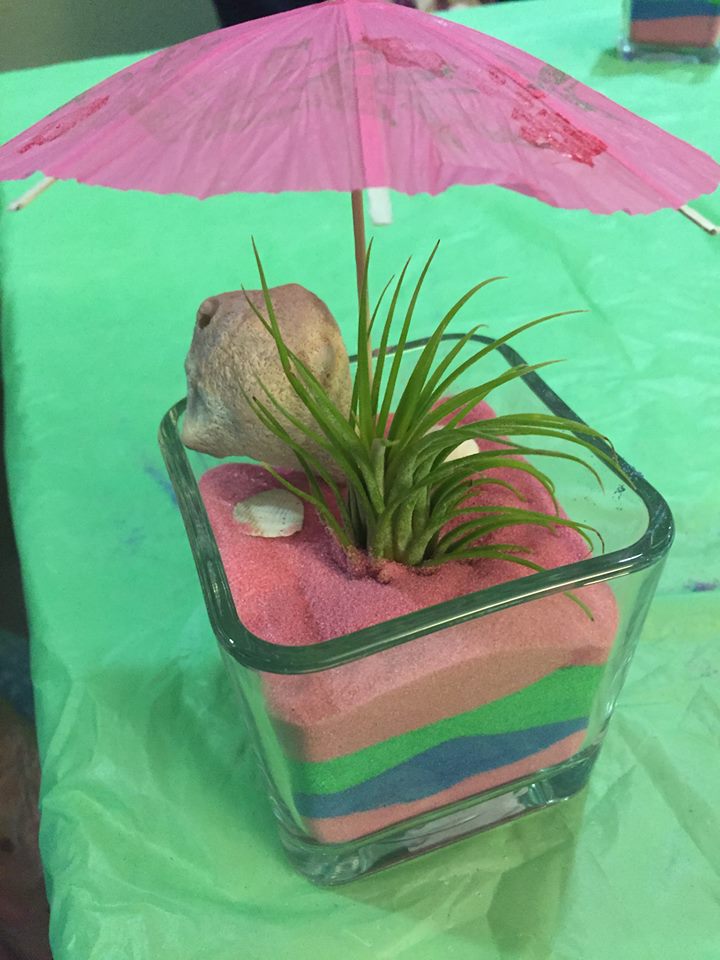 A Day at the Beach – Colorful Sand Art Cubes
A Day at the Beach – Colorful Sand Art Cubes
Clients apply layers and layers of colored sand into glass cubes. Then add a Tillandsia (or a succulent plant) to the cube. I always like to give clients an additional option to embellish their work and put the proverbial “cherry on top” – here, a pink flamingo, beach umbrella pick, and/or seashell. We talked about and passed around photos of beach imagery, listened to the “ocean” in a conch shell, examined sand dollars and seashells, passed around cuttings of tropical plants that grow in our climate, and even played in the sand and water for a little bit.
I like to take interesting plants that are “in season” and develop out an activity focused entirely on that plant. In this case, it’s all about lavender. Participants learned about the history, use, and benefits of lavender. (Insert deep breath here. Now don’t you feel relaxed?) We passed around photos of a lavender field in Provence, applied cotton swabs of lavender essential oil to the pulse points (wrist), compared the fragrances of dried versus fresh English lavender, and did a brief meditation exercise. I even brought in various products that incorporate lavender. We had a chuckle over Secret’s Clinical Strength “Ooh-La-La Lavender Scent” Deodorant. Participants then made lavender sachets and Tussie Mussie corsages with lavender and other material cut from the garden.
For Independence Day, we compared the explosions of fireworks to the structure of different flowers. Can you see the similarities? Participants discussed Hanabi (Japanese term – “hana” means “flower” & “bi” means “fire” – compare to flower viewing festival Hanami and the Japanese language of flowers Hanakotoba), then we discussed our traditions of Fourth of July celebrations. Incorporate the 5 senses in this discussion – Sight: fireworks / Smell: burgers on the grill / Taste: watermelon / Touch: swimming in the pool / Sound: patriotic songs played by the marching band in the local parade. We even played some random trivia questions about the history and fun facts of fireworks. Then the group made floral arrangements with white daisies and poms painted with red and blue floral paint. Add an embellishment of star stickers, buddy bows, or patriotic picks. (For inspiration, check out the Flowerworks photographic collection of Sarah Illenberger – who studied firework patterns and then collected and took beautiful photos of a variety of flowers that resembled those patterns.)
Use basic woodworking skills and recycled pallet wood to assemble planters. Plant with herbs or easy-to-grow houseplants. Personalize with stenciling, paint, or hot-glued clothespins for displaying plant tags.
Container gardening provides opportunities to garden in small spaces or locations where finances, manpower, and space are limited, as well as experiment with interesting plants, enhance existing garden features, develop additional programming, and much more. Can’t bring your group outdoors? Bring the outdoors in! Put lightweight outdoor containers on wheels and bring them indoors for planting in hot climates or working with clients who are sensitive to heat or sun. This is how we were able to plant containers during our unexpected rainy “monsoon season” in late spring. When containers are planted, wheel them back outside, water, and watch ’em grow. (Yes, even the most drought tolerant plants require ongoing maintenance, so make sure you have clients willing to help with upkeep.)
Propagating Plants and Celebrating our Unique Qualities
In my last post about working with a group of Afghan women, following a discussion about the qualities that make us uniquely us, I invited the group to propagate three plants – Sansevieria, spider plant, and begonia – in a small pot.
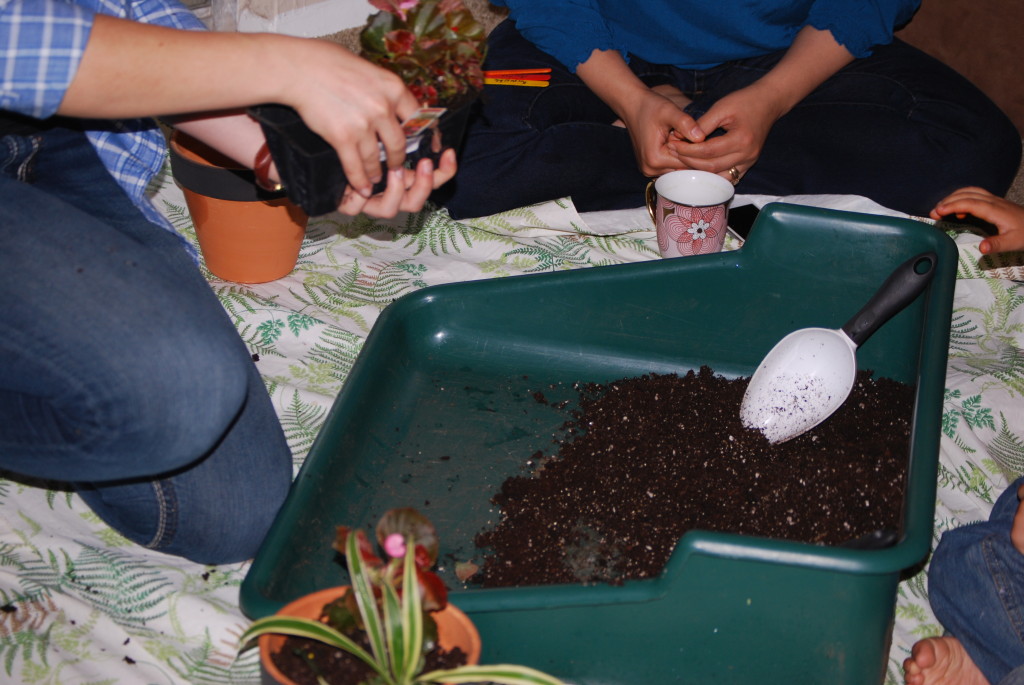 Then I gave them three brightly colored craft sticks, all different colors, and asked them to think of three words that describe themselves and describe the uniqueness of “me.” I encouraged them to write the words in their primary language on one side of the stick, and then we would translate them to English and write the words on the other side of the sticks. We worked together to do this portion of the project, and each participant proudly shared the three words that make them uniquely them. They inserted their sticks into the pot, assigning each plant the unique quality written on the stick.
Then I gave them three brightly colored craft sticks, all different colors, and asked them to think of three words that describe themselves and describe the uniqueness of “me.” I encouraged them to write the words in their primary language on one side of the stick, and then we would translate them to English and write the words on the other side of the sticks. We worked together to do this portion of the project, and each participant proudly shared the three words that make them uniquely them. They inserted their sticks into the pot, assigning each plant the unique quality written on the stick.
What are three words that describe the uniqueness of YOU?
